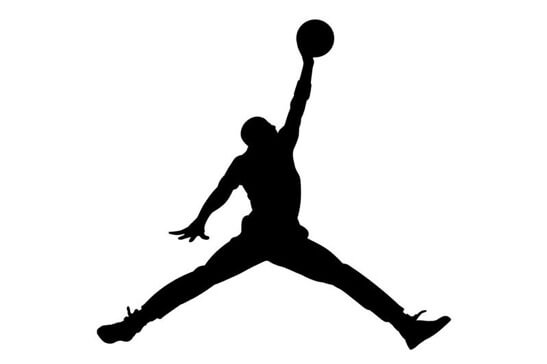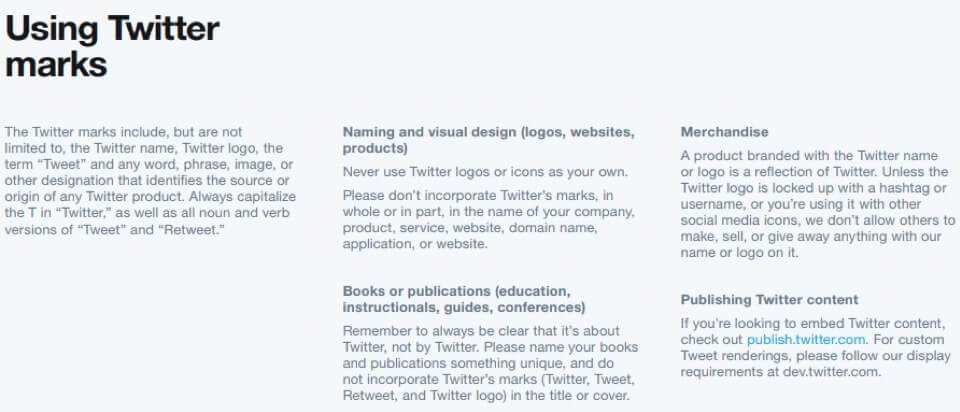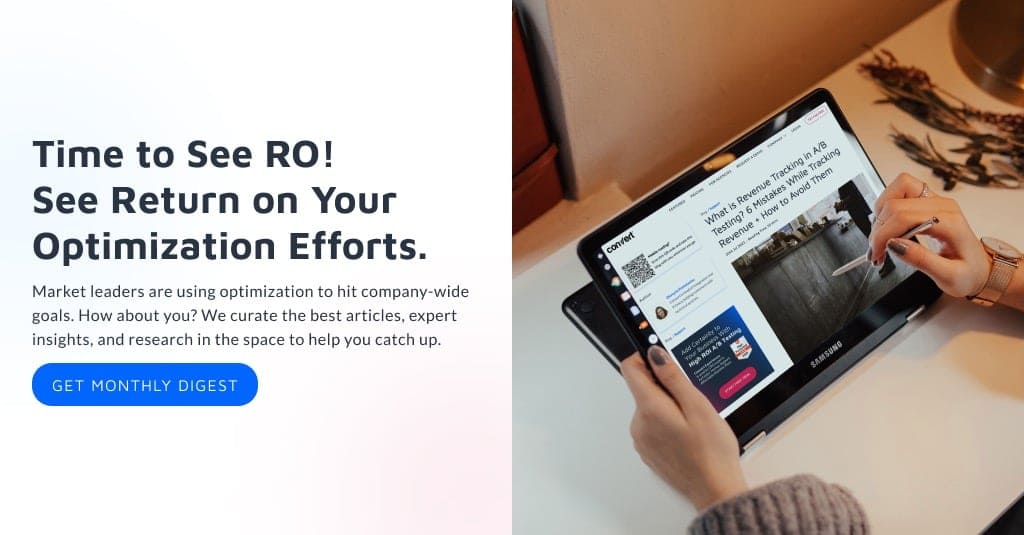Model logos are all over the place. They’re on our garments, in commercials, and even plastered on the perimeters of buses.
As shoppers, we’re bombarded with branding daily of our lives. However what occurs when entrepreneurs use those self same model logos with out specific consent to personalize ABM campaigns?
It is a query that got here up after we launched our latest A/B testing answer, Deploy.
Deploy makes it simple to personalize web site content material on the fly. With a couple of clicks, you possibly can take information out of your CRM or lead scoring platform to supply hyper-personalized internet experiences.
For instance, if at Convert, we had Sony Music on our ABM prospect checklist, then utilizing Deploy we may personalize our web site expertise for anybody from Sony Music who landed on our web site.
We may use Deploy to point out them a personalised welcome message saying:

However can you utilize different corporations’ logos in your web site like that? And their names?
The quick reply is: Sure, you possibly can.
However we get it.
Utilizing third-party logos and different Mental Property (IP) belongings can really feel dangerous. In any case, nobody needs to be a celebration to unintended infringement circumstances.
However such restricted, non-infringing, and non-commercial use of third-party logos in your web site is okay beneath account-based advertising and marketing campaigns. Let’s see how.
What Is Account-based Advertising? And Why (and How) it Makes use of Third-party Belongings Like Logos
Account-based advertising and marketing is a means for companies to win their finest accounts.
In account-based advertising and marketing, you create a listing
of goal accounts that you just’d like to have as your prospects.
And because the subsequent step, you create some distinctive
and unique advertising and marketing collateral and gross sales messaging for every of those
accounts and kickstart your outreach actions.
For instance, your social vendor will join
with the VP of your goal account on LinkedIn and after some warming up will
ship them a hyperlink to your web site.
However when this VP of firm X lands in your
web site, they gained’t see your generic homepage. As a substitute, they’ll see a singular
web site expertise customized solely for his or her firm.
Assume:
- A background picture customized with Firm X’s branding (as an example, utilizing their colour scheme)
- A customized headline copy immediately addressing “Firm X”
- A customized welcome chat message saying: “Hey there! Would you prefer to know we may also help Firm X…?”


And so forth…
Personalization options like Deploy could make a whole bunch of such customized variations of your common web site pages for every of your goal accounts — aka account-based advertising and marketing at scale.
Such personalization-at-scale campaigns usually use Mental Property belongings of goal accounts, corresponding to logos, names, slogans, and so on., to create an individualized expertise, permitting parts to talk on to them in methods delicate and daring.
Word: These personalizations are solely exhibited to individuals from the supposed goal account and nobody else.
Let’s now see why focusing on your key accounts utilizing their copyrighted or trademarked names and logos doesn’t imply violations and some finest practices to keep away from stepping into authorized issues when utilizing them.
Copyrights & Logos: The Two Safeguards for Mental Property Belongings Similar to Logos
Once you resolve to make use of a model’s Mental
Property belongings corresponding to its brand in your web site as a part of your account-based
advertising and marketing drives, it’s important to take into consideration two authorized mechanisms that work to
defend them:
- Logos
- Copyrights
Let’s speak about emblems first.
A trademark is used to guard a
“enterprise’s business id” or “model.”
A brand, phrase, identify, slogan, scent,
know-how, monitor, lyrics, and so on. can all be trademarked belongings.
For instance, Nike owns the next
emblems:
- The image/brand “Swoosh”
- The phrase “Simply do it“
- And the model identify “Nike“
Manufacturers trademark such belongings in order that they’ll
defend their model id and cease others from utilizing their or
“confusingly related” belongings.
By doing so in addition they make sure that their model recognition isn’t diluted as different manufacturers are restricted from utilizing any asset that individuals have come to acknowledge and affiliate solely with theirs.
For example, when California-based Peter
Maher and Patricia Hoyt Maher tried to register the trademark “JUST JESU
IT” for an athletic attire model, the trademark Trial and Attraction Board rejected their utility.
When deciding upon such functions, authorities often think about these three points (amongst different issues):
1. whether or not the opposer’s mark is known;
2. whether or not the opposer’s mark turned well-known previous to the date of the appliance to register the applicant’s mark; and
3. whether or not the applicant’s mark is more likely to blur the distinctiveness of the opposer’s well-known mark.
On this case, Nike’s trademark was clearly well-known and had bought well-known nicely earlier than the date of utility (by the Mahers). Not simply that, the Courtroom additionally famous that blurring may occur:
… [B]lurring happens when a considerable share of shoppers, upon seeing the junior social gathering’s use of a mark on its items, are instantly reminded of the well-known mark and affiliate the junior social gathering’s use with the proprietor of the well-known mark, even when they don’t consider that the products come from the well-known mark’s proprietor.
Additional, the Courtroom noticed that dilution and client confusion had been more likely to occur seeing how shut “the merchandise are to at least one one other.” On this case, each had been related merchandise (athletic attire) competing in the identical market/channels for a similar client class.
And now let’s see what copyrights
imply.
Merely put, copyrights are the authorized rights of the creator of an authentic work. Whereas copyright legal guidelines differ from nation to nation, primarily they make sure that the copyright proprietor can management if (and in any respect) others can use their work (and the way).
The Copyright Act (US),as an example, grants 5 rights to a copyright proprietor:
- the correct to breed the copyrighted work
- the correct to arrange spinoff works primarily based upon the work
- the correct to distribute copies of the work to the general public
- the correct to carry out the copyrighted work publicly
- the correct to show the copyrighted work publicly
Pictures,
designs, musical tracts, choreography, poems, pictures, designs and tons of
different creative, dramatic, literary and different works may be copyrighted.
Creators
(or generally their employers) personal copyrights to their work and can provide or
promote others restricted or full entry to their works for without end or stipulated
durations.
For instance, in 1985, Nike needed to pay photographer Jacobus “Co” Willem Rentmeester $15,000 for the correct to make use of their model of his iconic image (that captured the legendary basketball participant Michael Jordan leaping mid air about to dunk the basketball) on posters and billboards for 2 years in North America.
Rentmeester’s image with Jordan leaping to dunk the basketball with the solar setting within the background.
Nike’s “Chicago” picture displaying the basketball star in an analogous pose however in opposition to the Chicago skyline.
In a while, nonetheless, when Nike trademarked its “Jumpman” brand, which was a silhouette of Michael Jordan in a really related pose that Rentmeester had captured and (Nike had recaptured?), Rentmeester filed a copyright infringement case in opposition to Nike.


However Rentmeester misplaced the case. Courtroom US District Decide Michael W. Mosman wrote that:
[T]right here is nothing authentic concerning the choice and association of getting a Michael Jordan soar with a basketball within the neighborhood of a basketball hoop.
Moreover, the Courtroom identified that the images weren’t similar as they differed within the particulars of the pose, the dimensions and place of Jordan within the body, the colours, and the backdrop.
The Honest Use of Copyrights and Logos
As you possibly can perceive from the above examples,
all potential trademark and copyright infringement circumstances both have a transparent
factor of alleged “confusion” and “blurring” of name
distinctness or plagiarism.
However not all makes use of are so.
Some manufacturers even permit you to use their Mental Properties for particular functions free of charge. For instance, Twitter explicitly lists out how you should utilize Twitter belongings:


Moreover, the copyright and trademark system
permits for a couple of exceptions that allow you to use such Mental Properties of
corporations with out in search of their specific permission.
These “honest makes use of” primarily fall beneath two classes:
- Descriptive
- Nominative
Let’s perceive each.
Third-party Trademark Honest Use Case: Descriptive
If a trademarked time period is pretty descriptive, then others can use it so long as they’re utilizing it to explain their companies. That is allowed as a result of a trademark proprietor can’t be given a authorized monopoly over non-distinctive, generic phrases or phrases.
Take the Cosmetically Sealed Inds. Inc vs. Chesebrough Pond’s USA
Co. case, for instance.
Lip gloss maker, Cosmetically Sealed Inds.
Inc., had registered the phrase “Sealed
with a Kiss” as their trademark. The phrase is fairly descriptive as you
can inform.
When a competitor, Chesebrough-Pond’s USA,
Inc., began utilizing an analogous phrase “Seal
it with a Kiss” to advertise their lipsticks on their point-of-sale
promotional shows, Cosmetically Sealed Inds., Inc. filed a trademark
infringement case in opposition to it.
However they misplaced the case because the Courtroom famous that Chesebrough-Pond’s USA, Inc. used the phrase not as a product identifier however as a descriptive name to motion to ask shoppers to check their lipsticks’ sturdiness by making use of it after which sealing or imprinting a complimentary postcard. This use was descriptive — therefore wasn’t held for being infringing.
Third-party Trademark Honest Use Case: Nominative
In nominative honest use, others use an organization’s
emblems to easily confer with the precise trademark proprietor.
The truth that the third social gathering didn’t search the trademark proprietor’s permission to make use of their trademark for such references doesn’t essentially make such non-authorized use infringing.
There are numerous methods the nominative honest use of a trademark is used:
In the case of utilizing third-party emblems beneath the nominative honest use provision, it’s important to be conscious of many circumstances to guard your self from unintended infringements. The Worldwide Trademark Affiliation (INTA) — a worldwide affiliation working towards defending the rights of trademark house owners and securing helpful laws and its observance — explains a few of the nominative honest use circumstances as these:
1. the services or products in query just isn’t readily identifiable with out use of the trademark,
2 solely a lot of the mark as is fairly essential to establish the services or products is used and
3 use of the mark doesn’t counsel sponsorship or endorsement by the trademark proprietor In fact, there are lots of caveats to such nominative honest use of third-party emblems however often most non-commercial, non-infringing use circumstances use this provision.
Making the Case for Honest Use of Logos Beneath Account-Based mostly Personalizations
If you concentrate on how logos and different third-party belongings are utilized in account-based advertising and marketing campaigns conserving all of the above content material in thoughts, you’ll understand that ABM personalizations use them in a really restricted, non-commercial, and non-infringing means, primarily as a result of:
1. Solely individuals out of your goal account see their emblems in your web site — and nobody else. So the likelihood that the usage of their emblems in your web site could cause model dilution or confusion of their goal buyer base just isn’t there in any respect. Moreover, whenever you use your goal account’s emblems in your web site, you don’t intend to money in on their model worth — you’re solely doing so to attach extra meaningfully together with your goal account.
2. Your use isn’t suggestive of any endorsements or associations with the goal account. Neither is it deceptive or defamatory.
3. The trademark integrity is protected. (For instance, with the emblem getting used as is, and never in any distorted, dismembered, or misinterpreted types.)
Finest Practices to Keep away from Unintended Trademark Infringements in Account-based Advertising Campaigns
The applying of the honest use doctrine is a
fact-intensive inquiry. To extend the probability that it applies to your
account-based advertising and marketing campaigns, it is best to bear in mind the next finest
practices.
- Sustaining relevance with out being creepy. When somebody out of your goal account lands in your web page, you wish to join with them subtly. You don’t need them to really feel like they’re on a web page from their very own web site. Proper? So personalize meaningfully and solely the mandatory parts.
- Conforming to honest use. Keep away from messaging that’s
suggestive of affiliation, sponsorship, or endorsement by the trademark proprietor.
In case you may also help them someway together with your service, say it like that. Your
messaging and the way you utilize your goal account’s emblems ought to clearly
replicate the precise relationship between the goal account and your organization.
- Revising authorized pages. Add a clause to your privateness coverage and clarify the way you gather information, and the way you may course of IP addresses to make use of for ABM personalizations to supply a greater web site expertise. Additionally, add a conspicuous disclaimer concerning the possession of the emblems and clarify the aim and use you place them to.
And whereas this text helps you perceive how one can launch ABM drives that use your prospects’ emblems with out falling into authorized troubles, it shouldn’t be taken as authorized recommendation. Remember to seek the advice of a lawyer when contemplating customized ABM campaigns.
Set Up a Model Brand Personalization in Deploy
The extra highly effective
internet personalizations for account-based advertising and marketing campaigns will inevitably use
the goal account’s emblems.
However when carried out
diligently, they are often each protected and related… simply as you’d like them to be
to encourage your goal accounts to wish to work with you.
So when you’re searching for extra methods to attach together with your key prospects, you possibly can use Deploy to personalize your messaging. Verify this text for 16 extra concepts you possibly can check out in your web site at present (sure, at present, since you don’t want to attend till Dev makes time).


Initially printed August 13, 2019 – Up to date August 22, 2022
Cell studying?
Authors

Disha Sharma
Content material crafter at Convert. Captivated with CRO and advertising and marketing.



